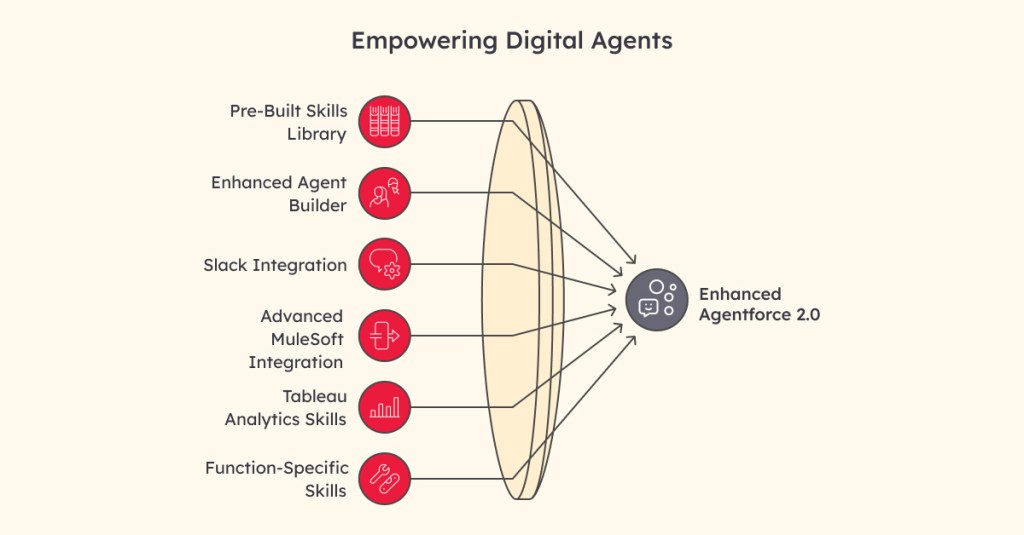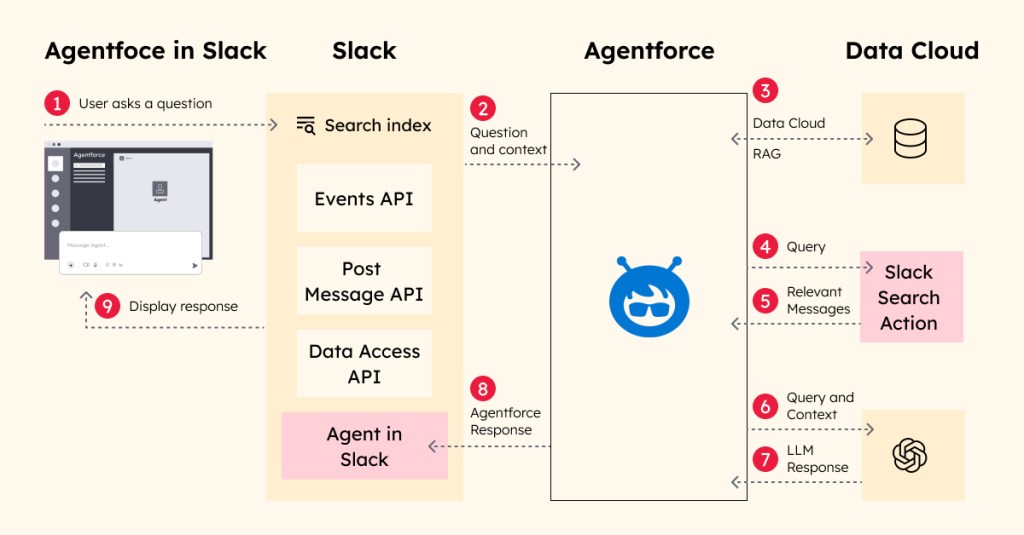Agentforce 2.0: What's new in Salesforce's latest digital labor platform
Salesforce has taken a significant leap forward with the December 17, 2024 launch of Agentforce 2.0, building upon the foundation established by its original digital labor platform. This evolution marks a substantial advancement in enterprise AI capabilities, with targeted improvements designed to make autonomous AI agents more powerful, customizable, and accessible across organizations. Let’s explore what’s new in this latest iteration and how it enhances Salesforce’s vision of a limitless digital workforce.
The evolution from Agentforce 1.0 to 2.0
While the original Agentforce introduced the concept of autonomous AI agents operating in enterprise environments, version 2.0 significantly expands these capabilities.

New library of pre-built skills
The most substantial addition to Agentforce 2.0 is its comprehensive library of pre-built agent skills that dramatically simplifies deployment. This addresses a key limitation of the original platform, which required more extensive custom development for each implementation.
What’s new:
- Extensive catalog of pre-configured skills spanning CRM, Slack, Tableau, and partner applications
- Ability to rapidly combine these skills for custom agent creation
- Partner-developed skills available through AppExchange
Enhanced Agent Builder with natural language instruction
Agentforce 2.0 transforms the agent creation process with a significantly improved Agent Builder.
What’s new:
- Natural language instruction interpretation (e.g., “Onboard New Product Managers”)
- Automatic agent generation based on these instructions
- Intelligent combination of pre-made skills with custom Salesforce logic
Slack integration and deployment
A standout addition in Agentforce 2.0 is native Slack deployment capabilities.
What’s new:
- Direct deployment of Agentforce within Slack environments
- Slack Actions available in Agent Builder
- Ability for agents to send DMs with project summaries or update Slack Canvases

Advanced MuleSoft integration
Agentforce 2.0 significantly enhances cross-system functionality through expanded MuleSoft capabilities.
What’s new:
- MuleSoft for Flow for creating low-code workflows across systems
- New MuleSoft API Catalog for centralized management of APIs
- MuleSoft Topic Center for infusing Agentforce metadata into every API
- “Agent-first” default for all API connection points
Tableau skills for enhanced analytics
The integration between Agentforce and Tableau receives substantial upgrades in version 2.0.
What’s new:
- Tableau Topics and Actions for enhanced data visualizations
- Improved predictions for deeper understanding of agent responses
- Business context-rich answers using Tableau Semantics
- Expanded conversational analytics capabilities
Function-specific skills
Agentforce 2.0 introduces specialized skills for various business departments.
What’s new:
- Sales Development and Sales Coaching skills for autonomous lead nurturing and call feedback
- Marketing Campaign and Commerce Merchant skills
- Scheduling capabilities for service engagements
- Field service worker support capabilities
Skill recommendation system
A completely new addition to Agentforce 2.0 is its intelligent skill recommendation system.
What’s new:
- Automatic suggestion of relevant skills based on described tasks
- Auto-generation of topics and instructions
- Leveraging of existing skill libraries for rapid deployment
The impact of these enhancements
These advancements collectively address the primary limitations of the original Agentforce platform:
- Reduced technical barriers: By providing pre-built skills and natural language agent creation, Agentforce 2.0 dramatically lowers the technical expertise required for implementation.
- Expanded integration: With enhanced MuleSoft, Tableau, and Slack integration, agents can now operate seamlessly across more business systems and workflows.
- Improved intelligence: Advances in agentic reasoning and RAG enable more accurate, context-aware responses to complex business scenarios.
- Faster deployment: The combination of pre-built skills, auto-generation capabilities, and enhanced customization tools significantly accelerates time-to-value. You can now create new agents in seconds using natural language descriptions.
Looking ahead
Agentforce 2.0 represents a significant maturation of Salesforce’s digital labor platform vision. By addressing key limitations of the original version, Salesforce has created a more accessible, powerful, and flexible system for deploying autonomous AI agents across enterprise environments.
For organizations that may have found the original Agentforce promising but complex to implement, version 2.0 offers a substantially streamlined path to realizing the benefits of digital labor. As businesses continue seeking ways to address resource constraints and growing workloads, Agentforce 2.0’s evolution may well represent a turning point in the practical application of autonomous AI agents in enterprise settings.
Want to have a conversation on Agentforce with our experts? Reach out now.







